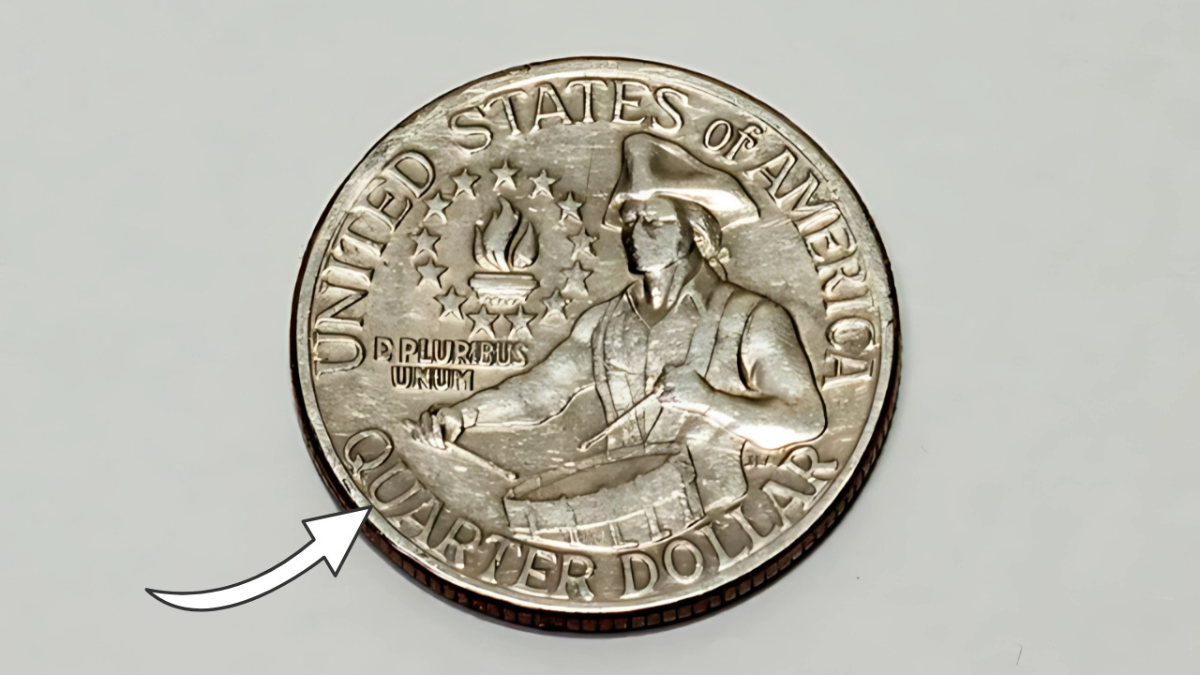
A Hidden Treasure in Your Pocket?
The 1976 Bicentennial Quarter, released to commemorate the United States’ 200th anniversary, has stirred up renewed excitement among collectors. Rumors have circulated that a rare version of this coin may be worth as much as $11 million—and it might still be out there in everyday circulation.
While most of these quarters are still worth their face value, a small number—thanks to minting errors or being struck on rare planchets—have fetched extraordinary sums at auction. Social media posts and numismatic forums are abuzz, urging Americans to check their change for this elusive, high-value coin.
The Bicentennial Quarter: A Snapshot of American History
Produced in both 1975 and 1976, the Bicentennial Quarter is easy to recognize. It features George Washington on the obverse and a Colonial drummer boy with a torch and 13 stars on the reverse—symbolizing the original colonies.
Here’s how many were minted:
- Philadelphia: 809 million
- Denver: 860 million
- San Francisco (silver issues):
- 11 million uncirculated (40% silver)
- 4 million proof (40% silver)
Most circulating coins are made of copper-nickel, but rare variants include silver strikes, double die errors, and even coins struck on incorrect planchets—some of which are highly coveted by collectors.
The staggering $11 million valuation often mentioned online stems from rumors of an ultra-rare silver error coin with a double die obverse—though no authenticated sale at this price has been confirmed.
The Rare Bicentennial Quarter Valued at $11 Million: Still in Circulation?
How to Identify a Potentially Valuable Bicentennial Quarter
If you’re hoping to strike it rich, keep an eye out for these features:
- Double Die Obverse (DDO): Look for doubling in the text “1776–1976” or “LIBERTY.” Use a magnifying glass for clarity.
- Silver Composition: Silver quarters (especially 40% silver) will lack the orange-copper edge found on standard clad coins. They also weigh 6.25g versus 5.67g for copper-nickel ones.
- Mint Mark:
- “S” indicates San Francisco mint—often silver, especially in proof or uncirculated sets.
- No mint mark (Philadelphia) and “D” (Denver) are typically clad.
- Condition: Coins graded MS-67 or higher by PCGS or NGC can command significantly higher prices.
If you think you’ve found a rare piece, don’t clean it! Instead, have it graded by a reputable service like PCGS or NGC.
Fact vs. Fiction: What’s the Real Market Value?
Despite the viral $11 million figure, no verified Bicentennial Quarter has sold for anywhere near that amount. According to CoinValueChecker.com, here are some notable (and confirmed) sales:
- 1976-S Silver Proof: Sold for $13,500 in 2019
- 1976-D Clad DDO: Fetched up to $8,400 in 2023
- Double Denomination Error (struck on a dime): Sold for $9,200 in 2020
Claims of $11 million—or even higher valuations—often come from speculative or unverified sources. In fact, some Reddit users in r/coins dismiss these as exaggerated or even AI-generated misinformation. Still, legitimate rarities can bring in thousands of dollars, especially rare proof coins like the 1976 “No S” Silver Proof, which some sources estimate could be worth up to $40 million—though none have been confirmed in private hands.
Key Bicentennial Quarter Variants to Know
| Variant | Estimated Value | Rarity |
|---|---|---|
| 1976 “No S” Silver Proof | Up to $40 million | Extremely Rare |
| 1976-S Silver Proof | $10 – $13,500 | Rare |
| 1976-D Clad DDO | $500 – $8,400 | Moderately Rare |
| Double Denomination on Dime Planchet | $1,000 – $9,200 | Very Rare |
This Canadian Nickel Could Be Worth a Fortune: The Holy Grail of Nickels!
Join the Hunt for America’s Forgotten Coinage
Even if the $11 million coin proves mythical, thousands of dollars may still be hiding in your pocket, piggy bank, or coin jar. With America preparing to celebrate its 250th anniversary in 2026, interest in Bicentennial coins is reaching new highs.
To boost your chances:
- Search old bank rolls and coin collections.
- Look for silver edges or doubled text.
- Use tools like PCGS CoinFacts or visit r/coins for tips.
- Always handle potential finds by the edges to avoid damage.
Who knows? You might just stumble upon a piece of American history—one that could be worth far more than 25 cents.
